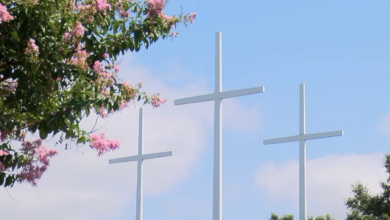Indigenous dancers revive celebration of Niño de Atocha in southern Mexico

Chiapa de Corzo, Mexico, Jan 4 (EFE).- Hundreds of children descended from the indigenous Zoque people on Wednesday returned to the streets after two years of pandemic restrictions to dance for their patron saint, the Niño de Atocha (Sacred Child of Atocha), in the southeastern Mexican town of Chiapa de Corzo.
The ancestral tradition, known as the “danza del parachico,” is the product of the syncretism of the traditions of the Maya people with the Spaniards.
This is the first year that the dancing has been allowed after the Covid-19 pandemic, with the conditions for the ritual being lacking for the past two years.
Elena Monterojas, 6, said that these two years passed very slowly because the pandemic restrictions prohibited people from dancing and participating in the traditional street procession in Chiapa de Corzo.
“All the ‘parachicos’ children got sick, but they’re better and they’re going to the fiesta now,” she told EFE.
Every Jan. 4, little boys – with the help of their parents – wear the colorful and elaborate “parachico” outfit and little girls wear the “chiapaneca” to dance for the patron saint.
It is a joy for the young dancers to participate in the time-honored tradition.
“I feel very happy despite these years (of restrictions), thanks to the people,” Salvador de Jesus told EFE, asking the Sacred Child “not to let this tradition end.”
His father, bricklayer Salvador Perez, said that he was very grateful to the saint for allowing his son to dance.
“It’s a date on which all the children pay tribute to the Niño de Atocha and it’s a joy for us as parents for our kids to go out and dance today … It’s his first time,” he said.
During the procession through the streets of Chiapa de Corzo, the children shout “Viva!” and visit the shrines of all the saints that are venerated in this colonial city.
The tradition of venerating the image and dancing to honor the Sacred Child of Atocha has been passed down from generation to generation, with the children being taught about it by their parents since they are very small. It is not until they are a bit older that they have the stamina to take part in the procession and support the weight of the elaborate costume.
For the local residents, the Sacred Child is very miraculous and every year they give thanks for the blessings they have received, while others come to the ceremony with requests to make, in exchange for which they promise to dance until they can’t go on.
The children who can handle it dance for more than four kilometers (2.5 miles) until they arrive at the Santo Domingo Church, where the priests welcome them and say a Mass for the youngsters.
This year, more than 20 kids, along with disabled persons, are participating in the ritual.
EFE –/bp





